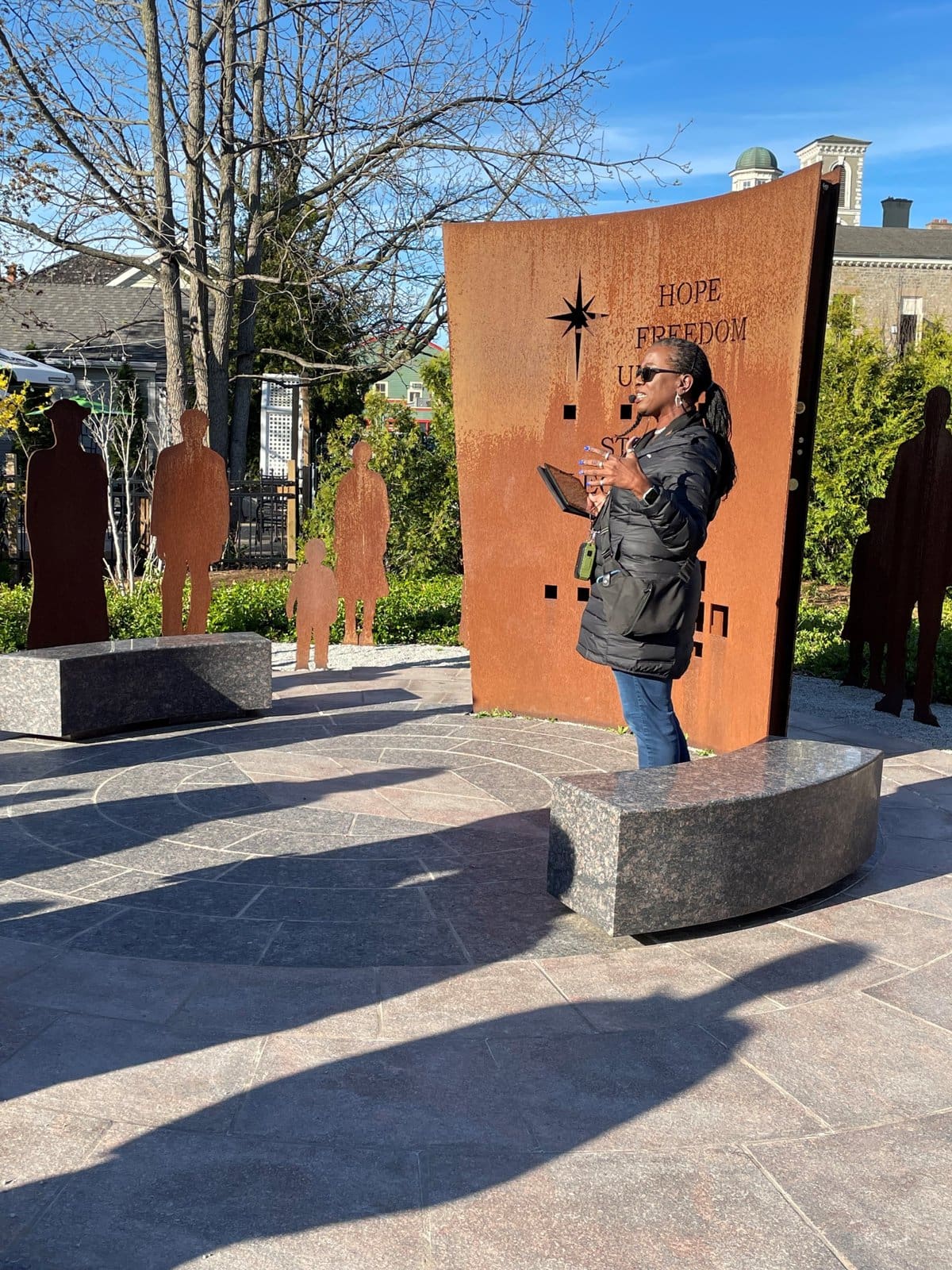Barbara Worthy
Special to The Lake Report
The Niagara-on-the-Lake Museum is honouring Black History Month with a series of presentations throughout February.
The museum kicks off the month on Friday, Feb. 2 with a discussion of the award-winning documentary, “Belonging,” which follows former First Lady Michelle Obama on her 30-city book tour across the United States.
The film is available on Netflix and the museum’s Doc Club will hold a Zoom chat about it Friday starting at 10 a.m. Email bworthy@nhsm.ca for a link to the documentary and the chat.
The presentations are part of the museum’s commitment to “keep telling the story” of Black history in Niagara and beyond.
After visiting the museum’s 2023 exhibit, “Bound and Determined: Chloe Cooley, Enslavement, and the Fight for Freedom,” a visitor urged the museum to “keep telling the story.”
“The time has come to understand the whole truth,” they said. “People should not be threatened by past history but use it to determine current history.”
And when actor, writer and educator Marcel Stewart said, “When I think of Black history in Niagara, I think of textbook pages that have been glued together,” the museum’s curator and managing director, Sarah Kaufman, knew her organization was uniquely placed to tell those stories.
“It was the voices of people like Chloe Cooley and Solomon Moseby right here in Niagara, that brought to light the injustices and inequities of a system here in Upper Canada that was discriminatory and racist,” said Kaufman.
In each case, their actions changed the course of history.
The passionate cries of resistance by the enslaved Cooley initiated the first anti-slavery legislation in the British Empire, right here in Upper Canada in 1793.
And Canadian extradition and refugee policies being used today were first introduced in 1838 to secure the release from a Niagara courthouse of the enslaved Solomon Moseby, following a public riot led by area residents.
The museum has been sharing these rarely told stories, with exhibitions, lectures and interpretive experiences (such as the Voices of Freedom Park in NOTL’s heritage district), with its annual July 9 Chloe Cooley Day commemorating the 1793 Act to Limit Slavery.
In this way the museum is hoping to preserve and promote the diversity of local history, ensuring that educators, residents and tourists alike, all benefit from the knowledge.
The museum works closely with scholars, experts and representatives of the Black community, such as the Ontario Black History Society; Rochelle Bush, a freedom seeker descendant, and trustee/historian of the Salem Chapel, BME Church, Harriet Tubman Underground Railroad national historic site in St. Catharines; and Natasha Henry-Dixon, PhD, an author and lecturer in the department of history at York University.
Together they offer guidance and invaluable research to museum projects, helping to tell the stories, “and open those textbook pages,” said Kaufman.
Recently at the museum, a mixed medium original art piece from Wayne Moore recreated the Chloe Cooley story; a musicology lecture from Carlos Morgan told the history of Black music in Canada; and regular Black history walking tours offered an in-depth look at early Black settlers who made significant contributions to Niagara, from teaching and farming, to business and local politics.
The “Belonging” discussion will be followed with a virtual lecture on Feb. 7 featuring Julian Sher, author of “The North Star: Canada and the Civil War Plots Against Lincoln,” which tells the story of Canadians and Confederate agents working together here in Canada, and the role they played in supporting the enslaved South.
And on Feb. 21, the Niagara Falls (N.Y.) Underground Railroad Center will present “The Borderland: Black Agency and Resistance Between Two Nations,” a virtual lecture on the fiercely passionate Black resistance movement on Niagara’s border with Upper New York.
See the museum’s website, notlmuseum.ca, for more details on current and previous Black history programs, including past lecture recordings, short documentaries and research into early Black settlements.
“Another visitor said to me, thank you for telling these stories of humanity, struggle, transition and freedom,” noted Kaufman.
“And that’s exactly what the NOTL Museum intends to keep doing, and not just for one month, but throughout the year.”










